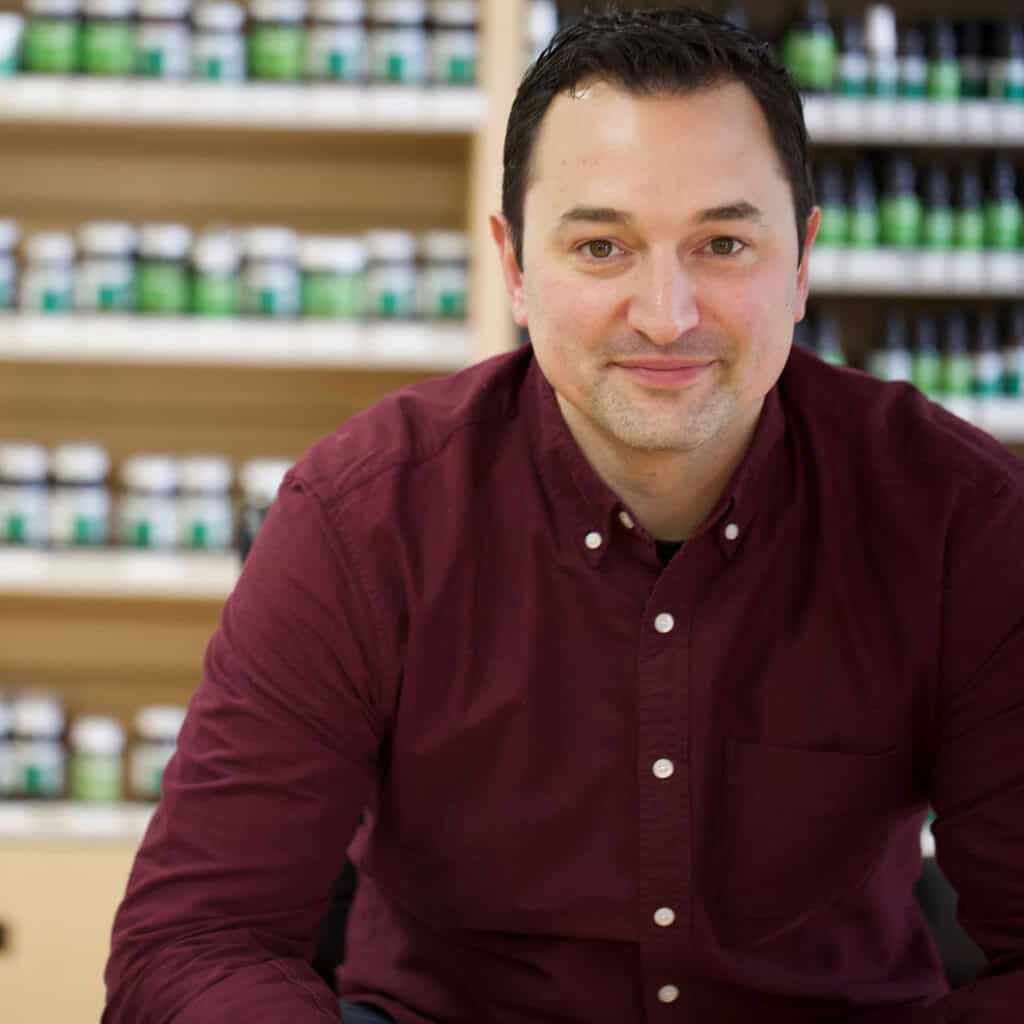We’ve spoken at length on Lyme disease in the past, addressing common myths and misconceptions surrounding it. We haven’t spent much time on the ticks themselves, though. Today’s discussion is a deeper dive about the little buggers and a quick review of all tick and Lyme related fun.
We want to give you practical, actionable advice around ticks, natural tick repellant, and tick bites. Think of this blog as a dose of anti-anxiety supplement. Better understanding the enemy, the timing, and the worst outcomes will boost your confidence when you venture outside and drop your fears down a few pegs. We really don’t want you wrapped in plastic on the couch all summer, hoping you stay bite free.
Let’s start off with something rather obvious. Ticks aren’t the problem. Tick BITES are. It’s a basic fact, but key – if you find a tick on you that isn’t embedded or munching on you, then it’s not too late nor should you be overly concerned. You dodged a bullet.
Here are links to our other discussions about ticks, and other articles for your reference:When Life Hands You Lymes, Make Lemonade Lyme Disease RevisitedEssential Oils for Pest Control
Tick Traits
First off, let’s be able to pick these guys out of a lineup. Here’s how to identify a tick:
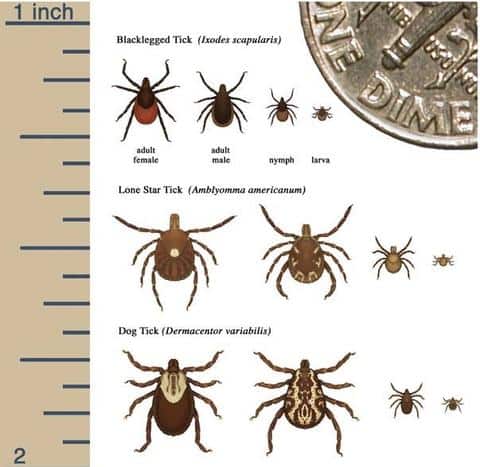
Photo: eMedicineHealth (Accessed 5/8/2018)
They’re tiny. If you zoom in close, you’ll see they are powerful:
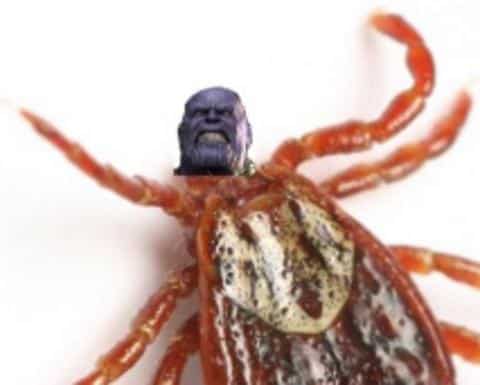
You’ll mostly see them mid-meal. Here’s what a tick feasting out looks like:
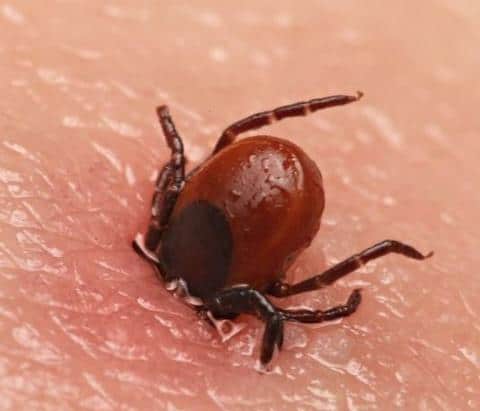
Photo: CNN Accessed 5/8/18
It’s like me when they have chocolate chip cookie trays at Christmas time. I’m upside down in a feeding frenzy, barely coming up for air.
This is what a tick bite rash looks like:
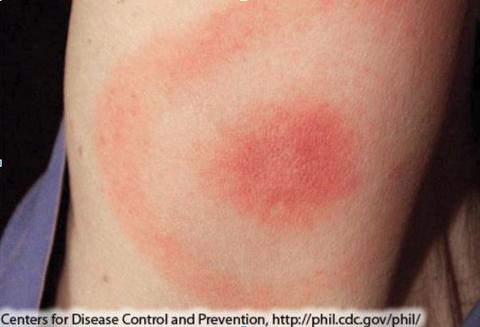
Tick Towns
Ticks are found coast-to-coast in America. The CDC has an awesome page dedicated to the different places ticks live, with photos and more details than I’d like to bore you with.
Woodstock and the Hudson Valley is notorious for being one of the WORST places in the region for ticks. I heard it’s because ticks are really into art, theater, good food, and music…
As for exposure, you’ll find ticks outside anywhere their preferred host (white tailed deer in this area) dwell. They don’t jump or fly; they only remain in grassy areas frequented by dogs, cats, humans, or deer.
We make this point a lot, but you can’t really spray away ticks. Repellents make it so you aren’t as attractive to them, but mostly we get ticks because we come in contact with them. Unlike mosquitos who are on the prowl, ticks grab on if the opportunity arises.
Super Important Point: Use natural or traditional repellents, but know that they won’t be 100% effective and thorough tick checks are required EVERY time you come in from outside.
Tick Tools
There are tools at your disposal to help you deal with ticks and prevent tick bites. First, your clothing. Long clothing will be a nice barrier between you and the outside, so find light, breathable clothing you can wear if you are out in tick rich areas.
The BEST tool most of us have are our hands and eyes. Checking for ticks should be a ritual from coming inside EVERY time you come in. When you come inside, take off your shoes and socks. Pull up sleeves, shirts, pants, and shorts a bit and run your hands over your legs, ankles, feet, arms, belly, back, and neck like you’re squeezing toothpaste down the tube. Visually inspect each area. If you can, get completely naked when checking. That’s weird at your friend’s house or at a restaurant, so do a quick check then go into a private space like a bathroom and give it a deeper look. If you spend lots of time outside, check more thoroughly.
Here’s a great video about it.
My eyes aren’t the greatest, so if you’re like me, get a small magnifying glass to help you check for ticks.
If you find a tick embedded in your skin, you have to extract that guy. Having special tick removal tools is an extra weapon, sure, but a set of fine point tweezers will get the job done. The CDC has detailed instructions:
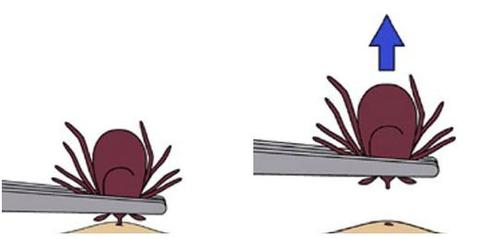
Squeeze near the head, yank straight up, then clean out the mess that’s left. Clean the area and your hands with soap and water or rubbing alcohol. Bag the tick up if you’d like to show it to your doctor, otherwise bag it and flush it.
NEVER crush a tick with your finger, “paint” the tick with nail polish or Vaseline, or use heat to make it detach. Those are tall tales these days; get it out as quickly as possible is the best.
Tick Toxins
More common sense inbound: Tick BITES aren’t even the problem. The REAL problem is that when a tick bites you, it may transmit an infectious disease that we then have to deal with. “No duh, Neal.” Yes, I know.
Again, CDC for the win on extensive, patient-friendly info on ticks. Here’s a list of tick-borne diseases. We care mostly about Lyme, the most common infection, but Babesiosis, a malaria-like infection, has been known to happen at times too.
Don’t worry, the disease can be identified and treated quite easily. In fact, we now have data to show that a single dose of antibiotic within a couple days of removing a tick will almost guarantee Lyme won’t develop.
Tick Timing
We’re all afraid of contracting a tick-borne illness, especially Lyme disease. This anxiety (which is a fevered pitch here in the Hudson Valley, one of our nation’s worst areas for ticks) can be turned into confidence after understanding one basic fact: the timing is in your favor.
Let’s review the general flow of time surrounding contact with a tick. Note that this is not only best-case but also the most likely outcome:
- Tick gets on you
- Tick bites you
- You find tick
- You remove tick
- You visit an urgent care center WITH THE TICK
- They give you antibiotics
- You finish the antibiotics
- 4 to 6 weeks pass. There are two possible outcomes:
- No symptoms of Lyme disease present: You’re golden
- Symptoms of Lyme: Go back to the doctors and get tested, and end up on more antibiotics.
Important points about Lyme:
- If you have had Lyme in the past, testing won’t be very reliable as you’ll already have antibodies to Lyme. You’ll probably get a preventative course if symptoms develop.
- The most crucial time is the first 24-72 hours after you find a tick in your skin.
- You do have time. You don’t have to drop what you are doing and run in. Worst case, they’ll give you an extended course (21 days) instead of the single dose.
Tick Treatment
We discussed Lyme treatment and the protocol at length in our recent rant on the topic. I’d like to address common questions specific to the antibiotic.
Are 2 pills enough?
Yes. Data shows that big dose is enough in the early stages to give it a good wack and keep it away.
My Doctor said to split the two capsules apart or to take way less than the recommended length (for 5 days or some variation)…
Confirm with the doc. The two-pill dose is taken as a single dose, and it may have been a transcription error. Current recommendations are here, so you can verify what’s correct.
Do I need a probiotic?
Definitely. We recommend probiotics with all antibiotics as it is a cheap, safe way to prevent severe antibiotic complications. Probiotic Complete is our favorite.
CRITICAL: Don’t take the antibiotic at the same time as the probiotic. Space the probiotic 2-4 hours from any dose of antibiotic. Well made probiotics are only needed once a day in most cases.
Are there any concerns with doxycycline?
I’m a pharmacist, not YOUR pharmacist, so make sure you ask this of them. Here are a few notes I tell my patients:
- Space from dairy or vitamins. The minerals (Calcium, Mag, Iron) in these products will “stick” to the doxy and prevent it from being absorbed – called chelation.
- Avoid sunlight. Not like a goth or vampire. The doxy can make you burn easier, so wear sunscreen.
- Take with food. It’s an irritant, so some people get nauseous easy. Take it with a full glass of water, maybe some crackers or something. The goal of taking with food is to empty the stomach faster. Water is the fastest, carbs are second fastest. Fats are the slowest, so don’t take it with a Double Cheeseburger.
Some people use meds for a year, is this right?
Long-term treatment (greater than 3-6 weeks) has been shown to NOT help, so no.
Troublesome Tick Twists
In this final section, I want to put your mind at ease once and for all. Let’s cover the worst case scenarios, and how you would respond. In other words…
What’s the Worst That Could Happen?
You don’t find the tick.
You find a bullseye rash on your body, but no tick. You’ve been outside on and off over the past week, so you don’t know how long ago you got bit.
Go to urgent care for a review. They’ll probably give you doxycycline for a few weeks. Still not a HUGE chance you’ll get Lyme, if you take the meds.
Prevention is key – check for ticks, check for ticks, check for ticks!
You STILL Get Symptoms After Early Antibiotics
You took a course of antibiotics (or even the 2 pill dose within 72 hours of exposure) and watched the clock. About 30 days later, you started getting symptoms.
There’s still nothing to be too concerned about. Return to the doctors as it is time for official tests. They will do diagnostic tests in series to confirm that those symptoms are actually due to Lyme.
Most likely, they will also give you another longer course of antibiotics. Maybe even a different one.
You Have a CONFIRMED diagnosis of Lyme
You did all the things and now it is confirmed, you have an active case of Lyme. No big deal. Very few people get the Post-Treatment Lyme Disease Syndrome (sometimes referred to as chronic Lyme).
Take the antibiotics. Stay off the internet. Except our blogs, of course.
There’s so much bad advice out there about protocols of herbs and supplements that will “cure Lyme.” There isn’t anything that will help beyond antibiotics and time. I challenge anyone who says otherwise to present REAL clinical data of specific interventions and their impact.
You have to take it easy though. Try to think of it like getting mono. Your body needs LOTS of rest to fight this off. We can help fine-tune your diet to ensure you are meeting nutritional goals.
From a supplement standpoint, the only things we’d recommend are the Vital 5 supplements anyway. In particular, proper fish oil, maybe some B rich foods, and a probiotic (for GI health but also because you may be on an antibiotic). The full recommendations are in our Lyme rant.
Your Lyme symptoms are persisting long past your course of antibiotics
This stinks but you may have post-treatment lyme disease syndrome (PTLDS). These days, this happens very infrequently due to our awareness and aggressive treatment.
Reread the last few paragraphs and our rant on the topic. This too shall pass.
Time To Terminate Talking Through T’s
One of my daughters was afraid of a fire in our house after a faulty alarm woke us up at 3am one night. She became anxious, worrying that a fire could happen.
How do you calm someone without being dishonest? Can you tell an 8 year old, “We probably won’t die in a fire, but it’s possible.” Instead, we said the following to ease her mind:
- It’s entirely possible something COULD happen. We can’t control whether or not it does, so we shouldn’t worry.
- We CAN take steps to prevent it. No candles, unplugging lights, smoke detectors, the whole 9…
- We can also PLAN. What if there is a fire? What do we do?
I use this example because of that anxiety many people, especially around here, have around ticks. I’ll say the same to you all:
- It’s possible you could get bit by a tick and contract Lyme, though it isn’t a very high chance, even here.
- We can PREVENT tick bites by using natural or traditional repellents, cover up using appropriate clothing, checking our outside pets and protecting them, and checking frequently after being outside.
- We can PLAN by knowing exactly what steps to take if we have a tick. Knowing how to remove the tick, what the timing looks like
As with everything in life, it is all ultimately up to chance. You could get bit, miss it completely, and get Lyme. There are amazing antibiotics that are effective at making it a short-lived thing. The nature of Lyme is a bit meaner than traditional infectious diseases, so seeking common-sense, practical advice around nutrition and supplements to help support you after a Lyme infection is essential. We’re here. If you are currently dealing with Lyme or get bit, call and speak to our experts.
Just trying to keep it real…

Neal Smoller, PharmD
Owner, Pharmacist, Big Mouth


